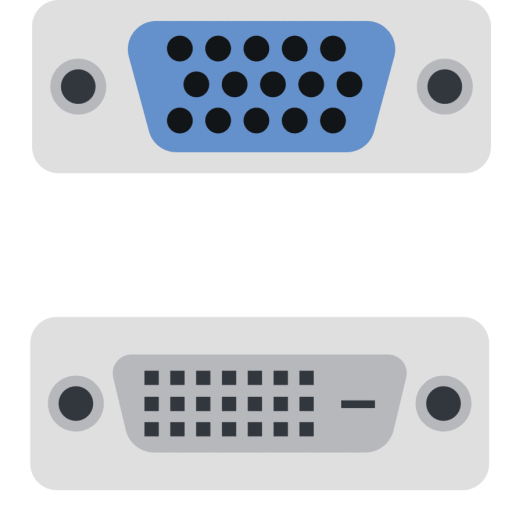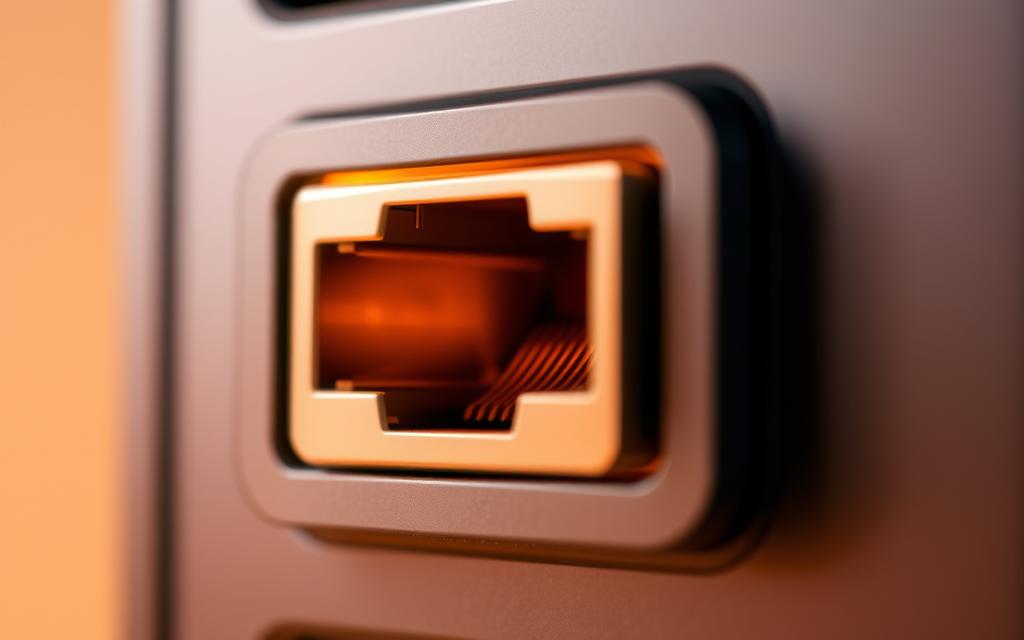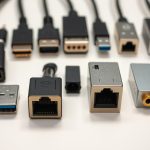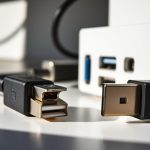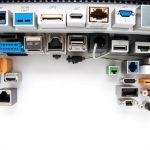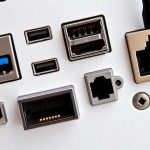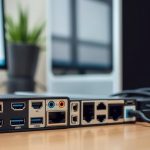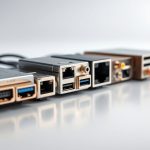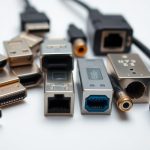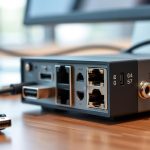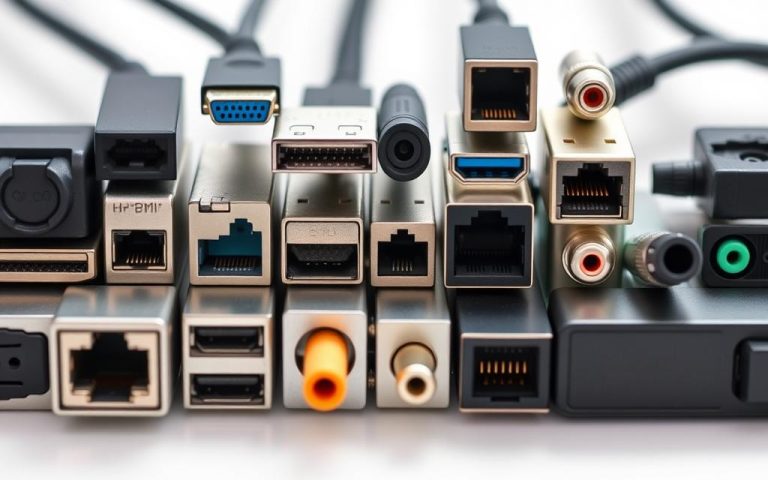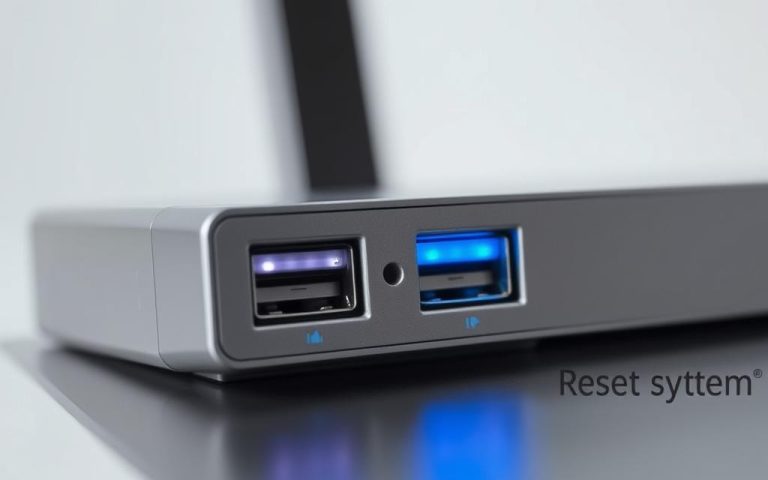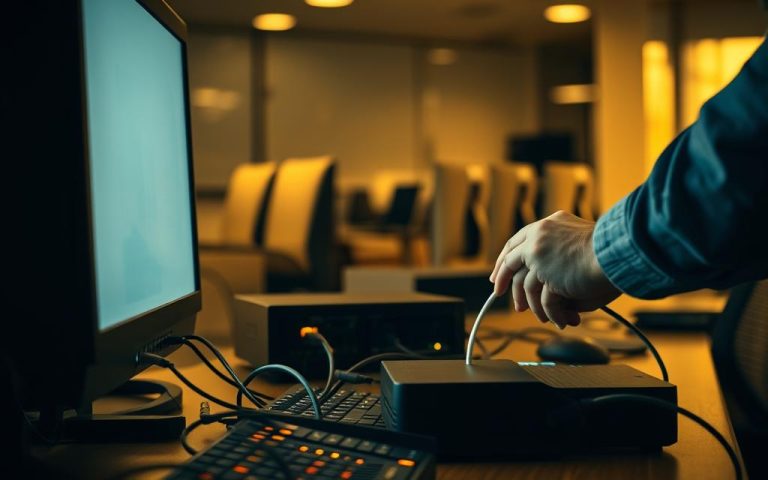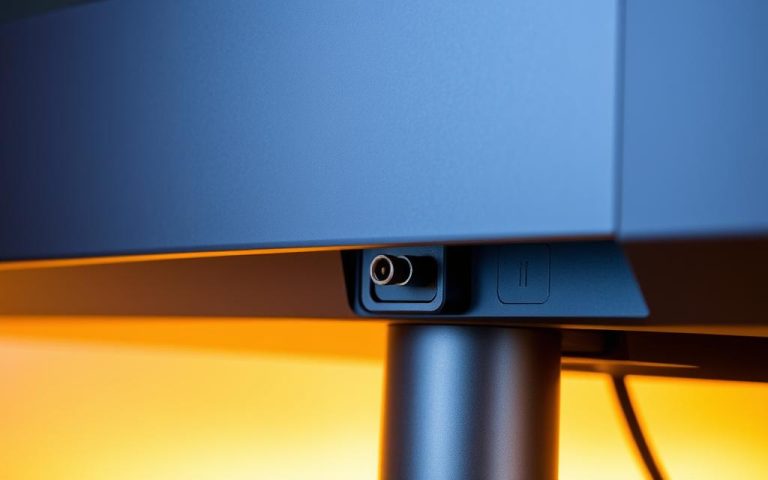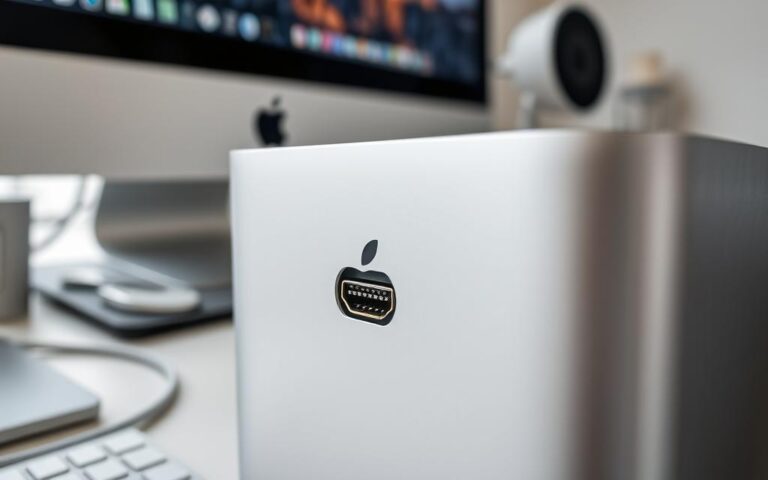PC Ethernet Ports: Fixing Connection Problems Fast
A stable Ethernet connection is crucial for reliable internet access on your computer. Troubleshooting connection issues is essential to maintaining a fast and stable network.
Wired Ethernet connections often provide faster speeds and more stability compared to wireless alternatives. This comprehensive guide will help you identify, diagnose, and resolve common Ethernet port problems on your computer.
Both hardware and software solutions will be covered to address various connection issues, ensuring that most Ethernet problems can be fixed without professional help using the step-by-step instructions provided in this guide.
Understanding PC Ethernet Ports
The Ethernet port, a staple on modern computers, is designed to facilitate high-speed internet connectivity through wired networks. Ethernet ports connect computers to wired networks, providing a stable and secure connection that is vital for applications requiring fast data transfer and low latency.
What is an Ethernet Port?
An Ethernet port is the physical interface that allows computers to connect to wired networks using Ethernet cables. It looks like a bigger phone jack and is typically found on the back or side of desktop computers and laptops. The most common type of Ethernet port is the RJ-45 connector.
Types of Ethernet Ports on Modern Computers
Modern computers feature various types of Ethernet ports, including standard RJ-45 ports, USB-to-Ethernet adapters, and Thunderbolt-to-Ethernet options. The evolution of Ethernet ports has seen speeds increase from older 10/100 Mbps ports to modern Gigabit (1000 Mbps) and 10 Gigabit ports.
Benefits of Wired Ethernet Connections
Using Ethernet connections offers several benefits over Wi-Fi, including faster speeds, lower latency, improved stability, and enhanced security. Ethernet connections can provide speeds up to 10 Gbps, making them ideal for bandwidth-intensive activities like gaming, video streaming, and large file transfers.
In summary, Ethernet ports are a crucial component for establishing fast and reliable internet connections. By understanding the different types of Ethernet ports and their benefits, users can make informed decisions about their network setup.
Identifying Your PC’s Ethernet Port
Your computer’s Ethernet port is the gateway to a stable and fast internet connection. To utilise it, you first need to locate it on your device.
Physical Appearance and Location
The Ethernet port on your computer is typically part of the Network Interface Card (NIC). It resembles a larger version of a phone jack and is usually found on the back of desktop computers or on the sides or back of laptops. To identify it, inspect your computer’s exterior closely.
How to Check if Your Computer Has an Ethernet Port
You can check for an Ethernet port both physically and through your computer’s settings. For Windows users, this involves checking the Device Manager, while macOS users can verify through Network settings. For detailed instructions, you can visit this guide on checking for an Ethernet port.
Ethernet Port Indicators and Status Lights
Ethernet ports often have indicator lights that show the connection status. A solid light typically indicates a connection, while blinking lights signify data transfer. If the lights are off, it may indicate a problem with the connection or the port itself.
| Indicator Light Status | Meaning |
|---|---|
| Solid | Connected |
| Blinking | Data Transfer |
| Off | No Connection or Faulty Port |
By understanding the physical appearance, location, and indicator lights of your Ethernet port, you can effectively identify and utilise it for a stable internet connection.
Common PC Ethernet Port Connection Problems
Ethernet connection issues can be frustrating, but understanding common problems can help resolve them quickly. Several factors can lead to Ethernet connection issues, and identifying these can help you troubleshoot effectively.
No Connection Despite Proper Cable Connection
Sometimes, despite having an Ethernet cable properly connected, your computer fails to establish a connection. This could be due to driver issues or hardware failures. Checking the network settings and ensuring that the Ethernet port is enabled can help resolve this issue.
Intermittent Connection Issues
Intermittent connections can be caused by loose cables, interference, or router problems. Ensuring that all cables are securely connected and checking for any signs of damage can help stabilize the connection.
Slow Connection Speeds
Slow Ethernet connection speeds can result from outdated network cards, cable quality issues, or incorrect speed/duplex settings. Updating your network card drivers and checking the cable quality can help improve speeds.
Port Recognition Problems
If your computer fails to detect the Ethernet port, it could be due to hardware issues or driver problems. Checking the device manager to ensure the port is enabled and updating drivers can resolve this issue.
By understanding these common Ethernet connection problems, you can take steps to troubleshoot and resolve them, ensuring a stable and reliable internet connection.
Basic Troubleshooting Steps
Troubleshooting Ethernet problems requires a methodical approach to identify and resolve the issue efficiently. Start by checking the physical connections to ensure that the Ethernet cable is securely connected at both ends.
Checking Physical Connections
Ensure the ethernet cable is properly connected to both the computer’s Ethernet port and the modem/router. Verify that the cable is not damaged.
Restarting Network Devices
Restart your network devices in the correct order: switch off your modem/router, wait for 30 seconds, and then restart your computer. This can resolve many common connection issues.
Testing with Different Cables
If the issue persists, try using a different ethernet cable to rule out any issues with the current cable.
Verifying Router Settings
Check your router settings to ensure that the Ethernet port is enabled and configured correctly. Consult your router’s manual if necessary.
| Troubleshooting Step | Action | Expected Outcome |
|---|---|---|
| Checking Physical Connections | Ensure ethernet cable is securely connected | Stable Connection |
| Restarting Network Devices | Restart modem/router and computer | Resolved Connection Issues |
| Testing with Different Cables | Use a different ethernet cable | Rules out cable issues |
| Verifying Router Settings | Check router settings | Enabled and Configured Ethernet Port |
Fixing PC Ethernet Port Software Issues
Resolving Ethernet port software issues is crucial for maintaining a stable internet connection on your Windows PC. Software glitches or outdated drivers can often be the root cause of Ethernet connectivity problems.
Updating Network Drivers
Outdated network drivers can cause connectivity issues. To update your network drivers, you can use the Device Manager, visit the manufacturer’s website, or utilise driver update utilities. Ensuring your drivers are up-to-date can significantly improve your Ethernet connection’s performance.
Resetting Network Settings in Windows
Resetting network settings can resolve persistent connection problems. You can do this by using the Settings app or Command Prompt. To reset using the Settings app, go to Settings > Network & Internet, and then select Status. Here, you can find the option to reset network settings.
Configuring IP Settings
Configuring IP settings is essential for a stable Ethernet connection. You can choose between Automatic (DHCP) and Manual IP configuration. For most users, Automatic is recommended. To configure, go to Settings > Network & Internet > Ethernet, and then select your connected Ethernet network. On the network properties page, look for the IP assignment section and choose your preferred configuration.
Disabling and Re-enabling Network Adapters
Disabling and re-enabling your network adapter can refresh your connection and resolve software glitches. To do this, go to Device Manager, find your Ethernet adapter under Network Adapters, right-click it, and select Disable device. Wait a few seconds, then enable it again.
By following these steps, you can effectively troubleshoot and fix software-related Ethernet connection issues on your Windows PC, ensuring a stable and reliable internet connection.
Resolving Hardware-Related Ethernet Problems
Ethernet connectivity issues stemming from hardware faults require immediate attention. Hardware-related problems can be challenging to diagnose, but there are several steps you can take to resolve them.
Diagnosing Damaged Ethernet Ports
To diagnose damaged Ethernet ports, inspect the port for signs of physical damage, such as bent pins or corrosion. Try using a different cable to rule out any issues with the current one. If the problem persists, the Ethernet port may be damaged.
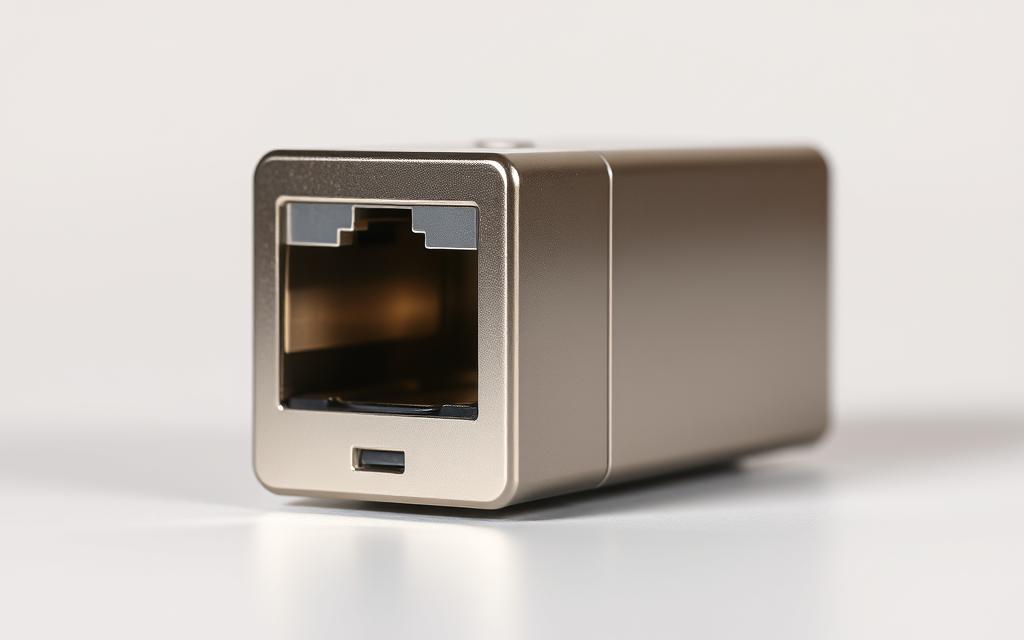
Using External USB to Ethernet Adapters
If your computer lacks an Ethernet port or if it’s damaged, consider using an external USB to Ethernet adapter. These adapters connect to a USB port on your device, providing Ethernet connectivity. Ensure you choose an adapter compatible with your device’s USB version.
Cleaning Ethernet Ports Safely
Dust and debris can cause connection issues. To clean Ethernet ports safely, use compressed air or a soft brush to gently remove any debris. Avoid using liquids or harsh chemicals that could damage the port.
When to Consider Internal Hardware Repairs
If your Ethernet port is damaged beyond repair, you may need to consider internal hardware repairs. This could involve replacing the network interface card or repairing the motherboard for integrated Ethernet ports. In some cases, using an external Ethernet adapter may be a more cost-effective solution.
Advanced Network Troubleshooting Techniques
For users who have tried basic troubleshooting steps without resolving their Ethernet connection issues, it’s time to delve into advanced network troubleshooting techniques. These methods can help identify and fix complex problems that are not addressed through basic troubleshooting.
Using Command Prompt Tools
Command Prompt tools such as ipconfig, ping, tracert, and netsh can be invaluable in diagnosing network connectivity issues. For instance, ipconfig can be used to release and renew IP addresses, while ping and tracert can help identify where network packets are being lost.
To use these tools, open Command Prompt and type the relevant command followed by the appropriate options. For example, typing ipconfig /all will display detailed information about your network configuration.
Network Diagnostics in Windows
Windows Network Diagnostics is a built-in tool that can automatically identify and resolve common Ethernet connection problems. To access it, right-click on the network icon in your taskbar, select “Open Network & Internet settings,” and then click on “Troubleshoot” under the relevant network type.
For more information on troubleshooting Ethernet connection problems, you can visit Microsoft Support.
When to Seek Professional Help
Despite exhaustive DIY efforts, some Ethernet connection problems may require expert intervention. It’s essential to recognise when the issue exceeds your technical capabilities.
Signs of Serious Hardware Failure
Indicators of serious hardware failure include a consistently faulty Ethernet port, physical damage to the port or surrounding components, and motherboard issues affecting the Ethernet controller. If your device’s Ethernet port is damaged beyond repair, you may need to consult a professional for internal hardware repairs or upgrades.
Complex Network Infrastructure Issues
In business environments, complex network infrastructure can be challenging to diagnose and resolve. Networking professionals can help identify and fix issues related to your network setup. If all else fails, make sure that your network password is correct and reconnect to the network.
When Software Solutions Don’t Work
If you’ve exhausted all software troubleshooting steps and the Ethernet issue persists, it may indicate a hardware failure. In such cases, seeking professional help is advisable to diagnose and repair or replace the faulty hardware.
Conclusion
Resolving Ethernet connection issues can significantly improve your online experience. Throughout this article, we have covered the key aspects of identifying and resolving PC Ethernet port connection problems. By understanding the different types of Ethernet ports and their benefits, you can better diagnose issues.
Methodical troubleshooting is essential, starting with basic physical checks before moving to more advanced software solutions. Most Ethernet connection issues can be resolved without professional help using the techniques outlined in this guide.
Wired Ethernet connections offer stability, speed, and security compared to wireless alternatives. To maintain optimal Ethernet performance, it is recommended to regularly update drivers and manage cables properly. If you frequently experience connection issues with older hardware, consider upgrading your Ethernet equipment.
By following these guidelines, you can ensure a reliable and fast Ethernet connection, enhancing your overall internet experience.
FAQ
How do I connect an Ethernet cable to my computer?
To establish a wired connection, locate the Ethernet adapter or LAN socket on your computer, then connect one end of the Ethernet cable to it and the other end to the modem or router.
What should I do if my Ethernet connection is not working?
First, check the physical connections to ensure the cable is securely connected to both the computer and the router or modem. If the issue persists, try restarting your network devices or testing with a different Ethernet cable.
How do I configure my IP settings for an Ethernet connection?
To configure IP settings, go to your computer’s network settings, usually found in the Control Panel or Settings app, and adjust the IP settings to use DHCP or manual configuration as required by your network.
Why is my Ethernet connection slow?
Slow Ethernet connection speeds can be due to various factors, including the quality of the Ethernet cable, the capabilities of your router or modem, or issues with your internet service provider. Try testing with a different cable or checking your router’s settings.
Can I use a USB to Ethernet adapter if my computer doesn’t have an Ethernet socket?
Yes, a USB to Ethernet adapter can provide a wired Ethernet connection to computers without a built-in Ethernet adapter. Simply plug the adapter into a USB port and connect an Ethernet cable to it.
How do I update my network drivers for a better Ethernet connection?
To update network drivers, go to your computer manufacturer’s website, find the support or downloads section, and search for the latest network driver updates. Install the updated driver and restart your computer.
What are the benefits of using a wired Ethernet connection over Wi-Fi?
Wired Ethernet connections typically offer faster, more stable, and more secure connections compared to Wi-Fi, making them ideal for applications requiring low latency and high bandwidth.
